Who doesn’t know it? You bought a new horse or already have one in the stable and you’re looking for a new bridle. You’re fighting your way through various online shops, catalogues and equestrian stores, but you can’t see the forest for the trees. There’s an abundance of different brands in different colours with different bridle styles, with or without bling, and even with big price differences – which makes you question, what the different between all of them actually is.
To help you out with your search, we’re answering 2 important questions for you.
- Which bridles are there and how to the work?
- How does a bridle have to fit?
Dy’on has a multitude of collections with different bridles. With so much choice, it’s of course tricky to keep a good overview.
Below, you can find our list of some common bridle styles and their effects:
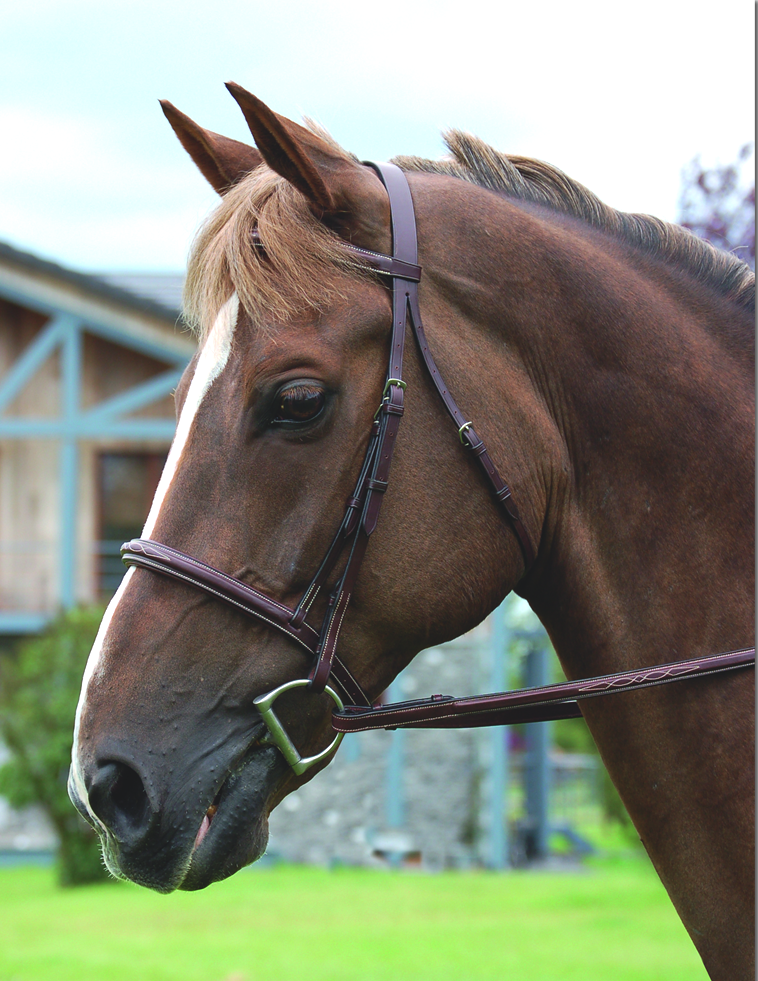
Cavesson bridle
With a cavesson bridle, also called English bridle or plain bridle, the noseband is high and runs straight across the nose. Signals of the reins puts pressure on the bars, which transfers pressure from the mouth to the bridge of the nose and the jaw. Depending on the horse’s head and the sensitivity of the horse, either a wide or slim nose band can be chosen. A slimmer noseband gives more direct pressure, while a wider noseband offers more pressure distribution.
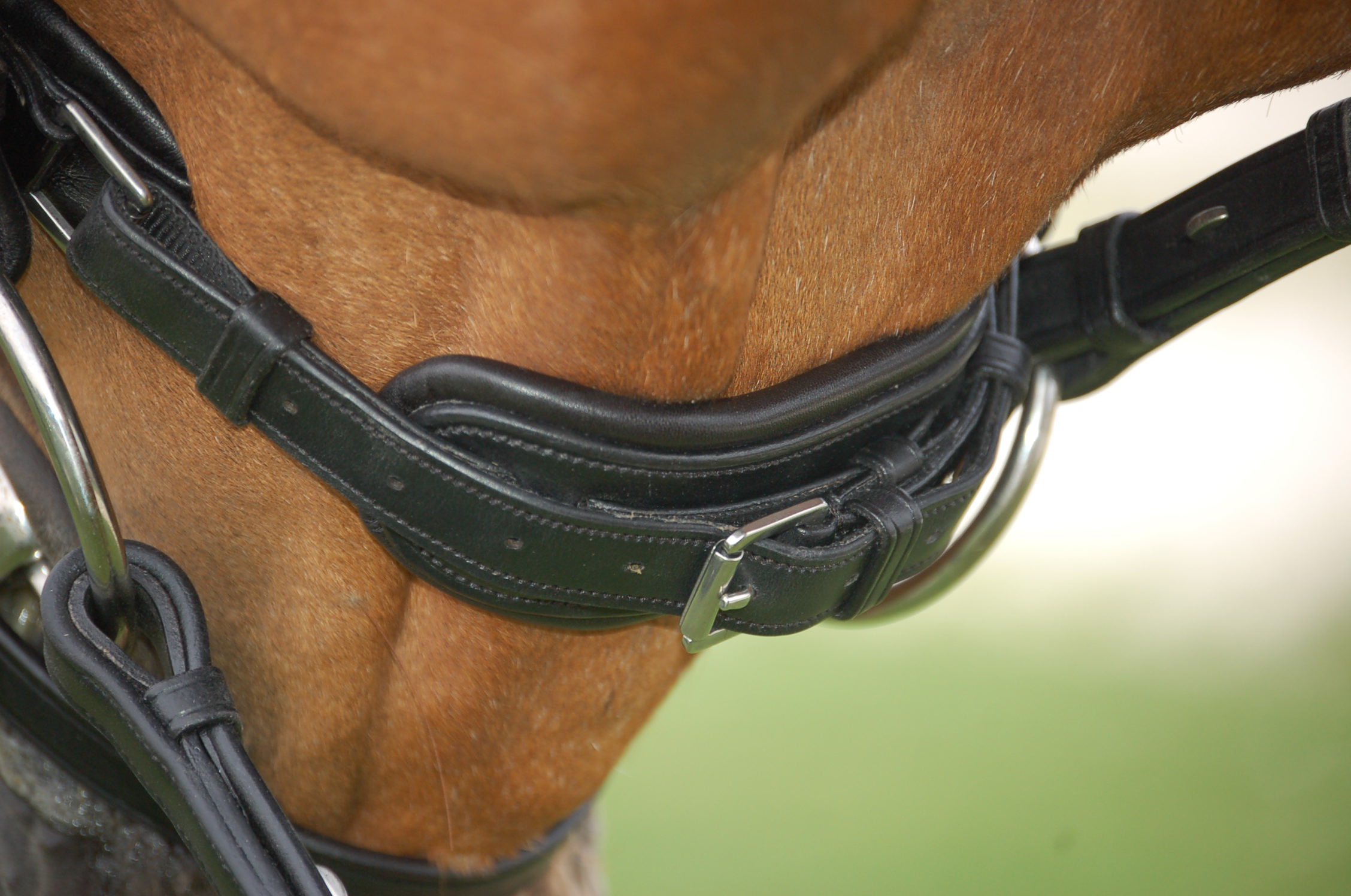
Crank bridle
A crank bridle’s most distinct feature is the way it’s closed at the noseband. Instead of having the left side of the noseband strap directly attach and close into the right side of the strap, it’s being pulled through and then closed. On both sides of the noseband, little rings are attached. The closing strap goes through the rings, back out and then closes in the middle. These rings work similar to pulleys, which means that you need to be extra cautious of the pressure applied on the noseband. Often, due to the pulley effect, nosebands of this type are closed too tightly. Always pay extra attention to the 2-finger rule for enough space!
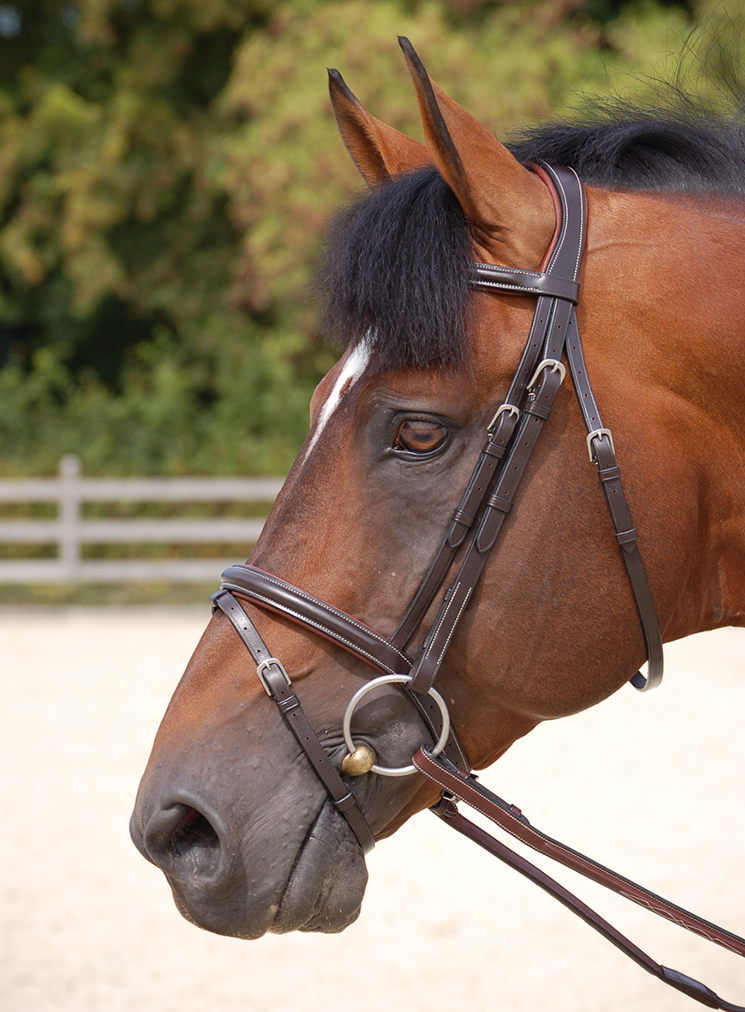
Flash bridle
The flash or combined bridle has a cavesson noseband with an extra flash band. The flash band goes around the mouth and ensures a calmer position of the bit in the mouth. Horse that tend to open their mouth and tilt their head, can benefit from a flash band. This combination also distributed the pressure on bridge of the nose, lower jaw and on the chin hollow.
All noseband have to have enough distance to the cheekbone of the horse. The rule of thumb is that it should be position around 1-2 fingers below the cheekbone, but do keep in mind that a noseband that’s positioned too low can also lead to discomfort.
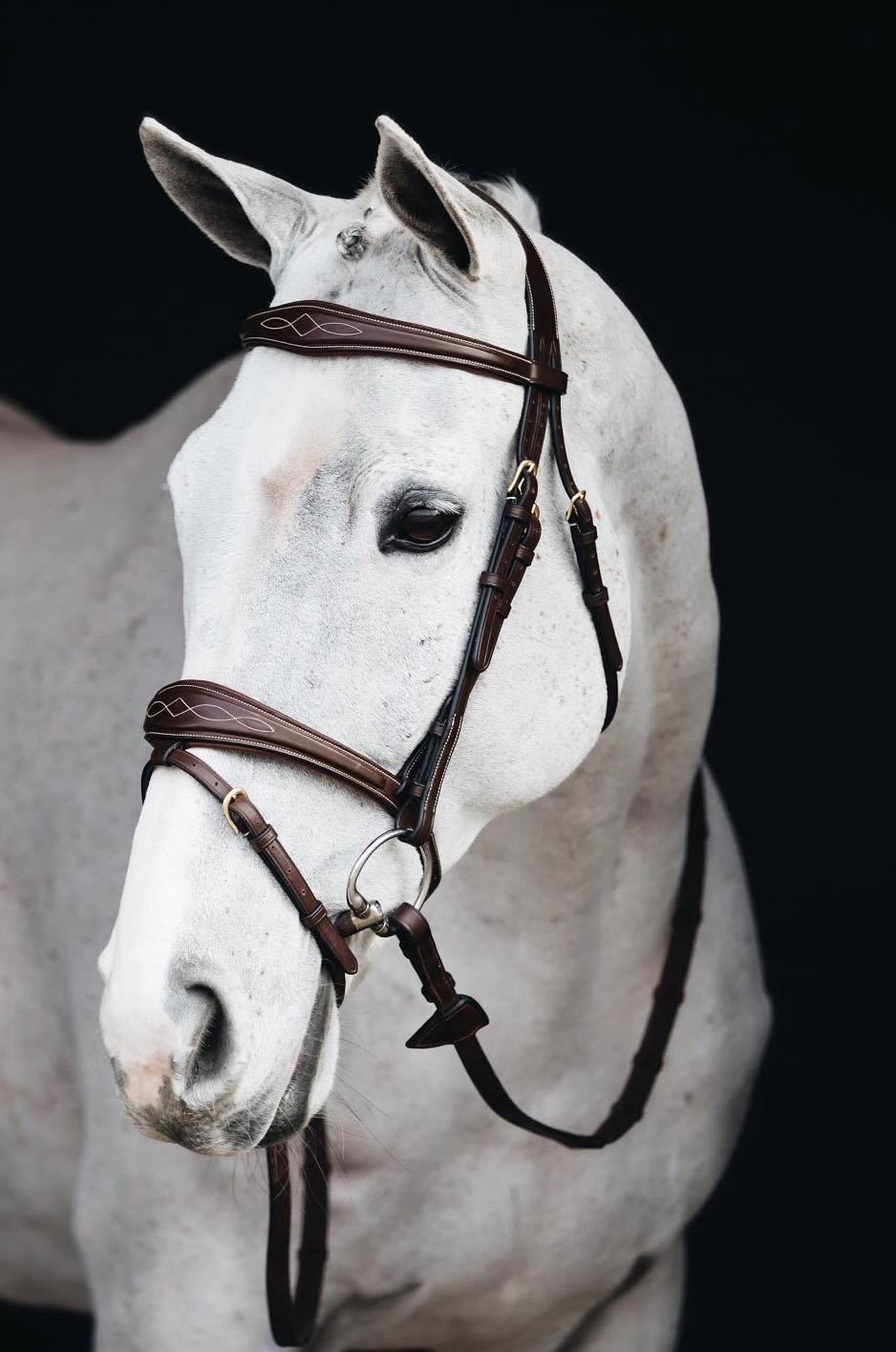
The Anatomic Bridle from the Dy ‘on Collection has a wide, anatomically shaped noseband and anatomic neckpiece, which both leads to very horse-friendly pressure distribution.
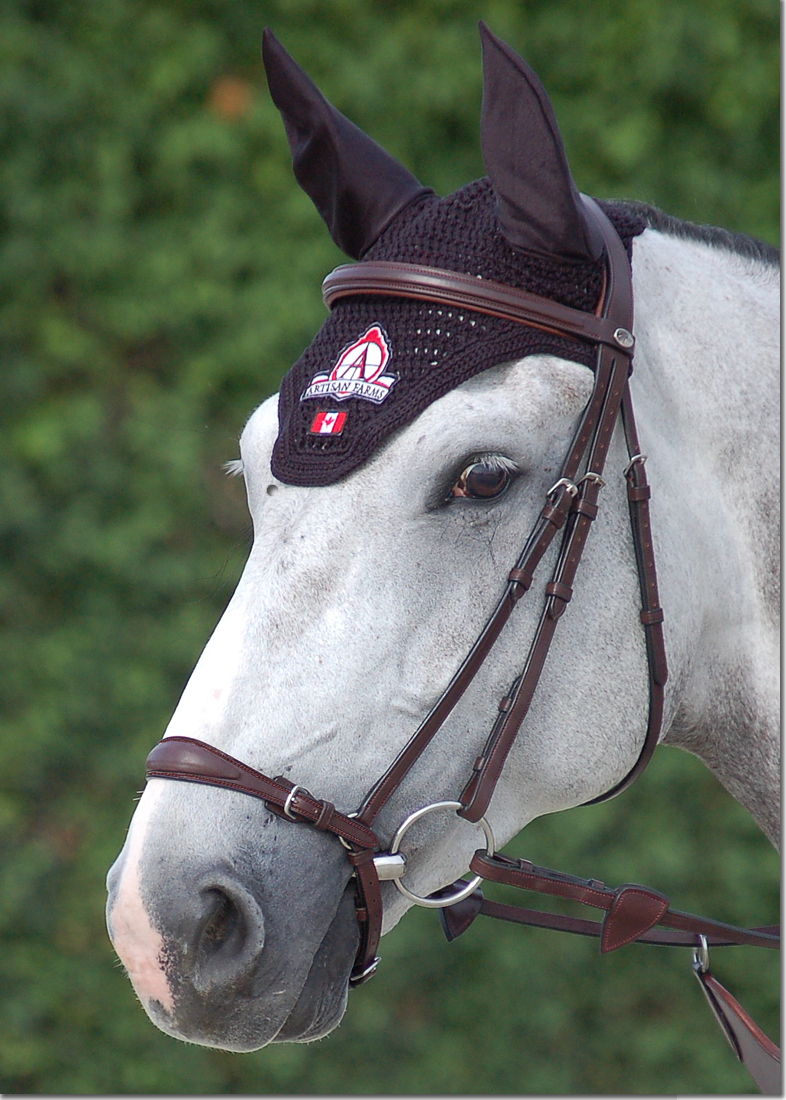
Drop noseband
The drop noseband, or Hanoverian noseband, is lower on the head than a cavesson noseband is and has a somewhat similar position to the flash band, running over the bit. The drop noseband transfers the influence from the mouth to the nasal bone and chin hollow. The part of the chin strap that lays at the chin offers a more stable position of the bit in the mouth.
The smaller noseband and is lower position make this type of bridle stronger than a cavesson one. Pressure is mostly being put on the lower bridge of the nose. It is especially suited for horses that are being ridden with a normal bit, but tend to get stronger every now and then. The pressure on the lower nose helps the horse to come back more easily and makes the horse softer in the hand.
For horses with a smaller mouth, a drop noseband is at risk of being positioned on the soft part of the nasal bone. This is a very sensitive spot of the nasal bone and could even break under too much pressure.
The drop noseband is also more restricting for heavy breathing than a cavesson or even flash noseband. Due to the angle created by the connection of noseband and cheekpiece, pressure and influence on the poll are created when pulling on the reins.
The rule of thumb for the position of a drop noseband is about 4 fingers above the nostrils. Of course, you also need to pay attention that the noseband is not too long, in order to avoid problems with the bit.
Mexican noseband
A Mexican noseband, also known as Figure 8 noseband, crosses on the middle of the horse’s nose. This type of noseband offers the horse the possibility to breathe as freely as possible, which is also why you will often see if at eventing competitions or in the jumping ring. Just like with a flash noseband, the influence of the aids is being transferred onto the chin hollow, lower jaw and bridge of the nose. The crossing point on the middle of the nose acts as a pressure point. The noseband also transfers pressure onto the poll.
But you do need to be careful with this noseband too. Straps that cross over the zygomatic bone can cause excessive pressure when the aids are strong, as there’s only very little skin covering the bone. The horse will go against this pressure. Horses with sensitive skin can get skin sores and chafing already solely from chewing. The correct position underneath the zygomatic bone is therefore absolutely crucial.
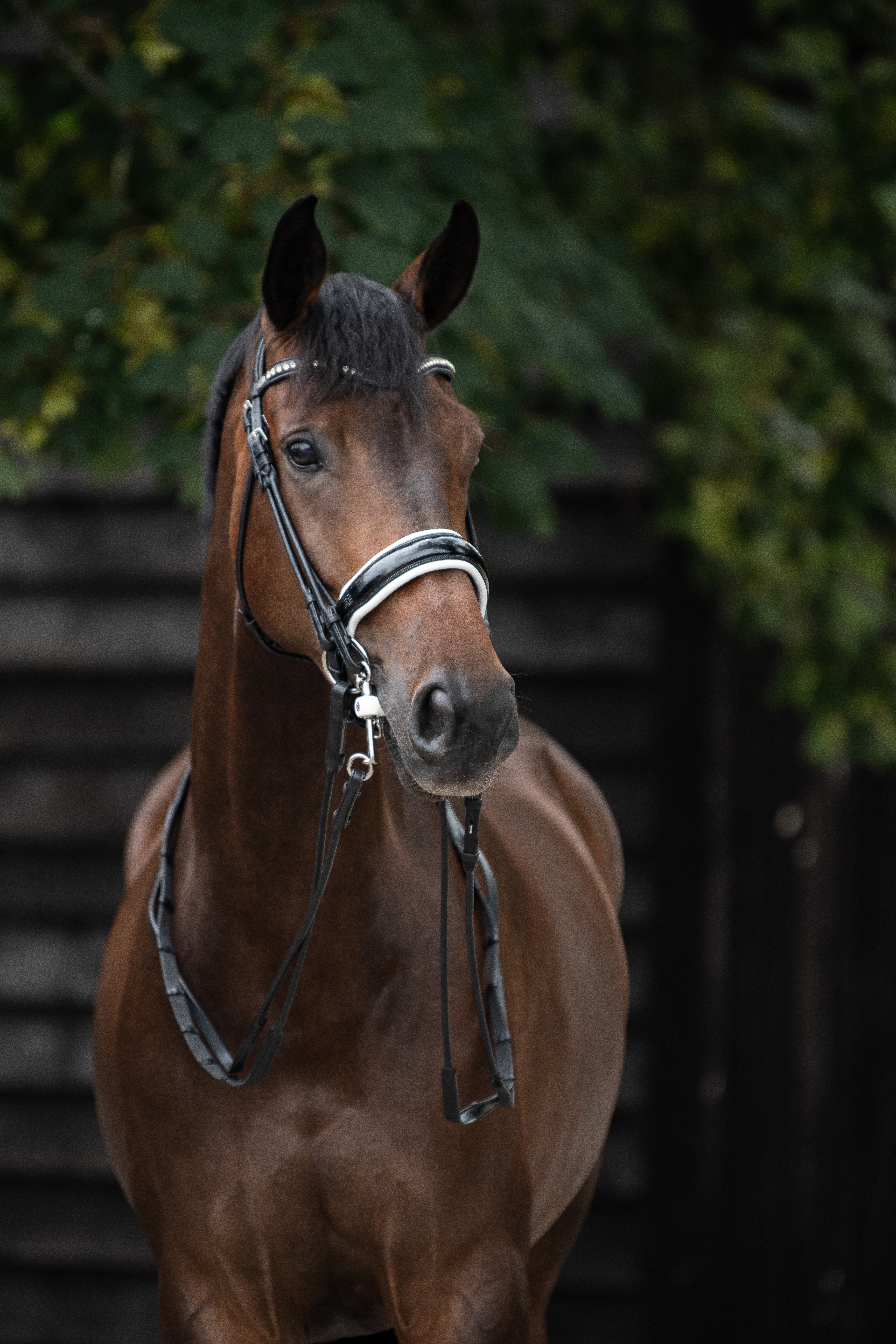
Weymouth bridle or double bridle
This bridle is similar to the cavesson or crank noseband. But other than with a “normal”, one-bitted bridle, a double bridle has a second cheekpiece on either side for a second bit. You will typically see a double bridle in the higher dressage sport, use with a normal bit as bridoon and a straight Weymouth bit.
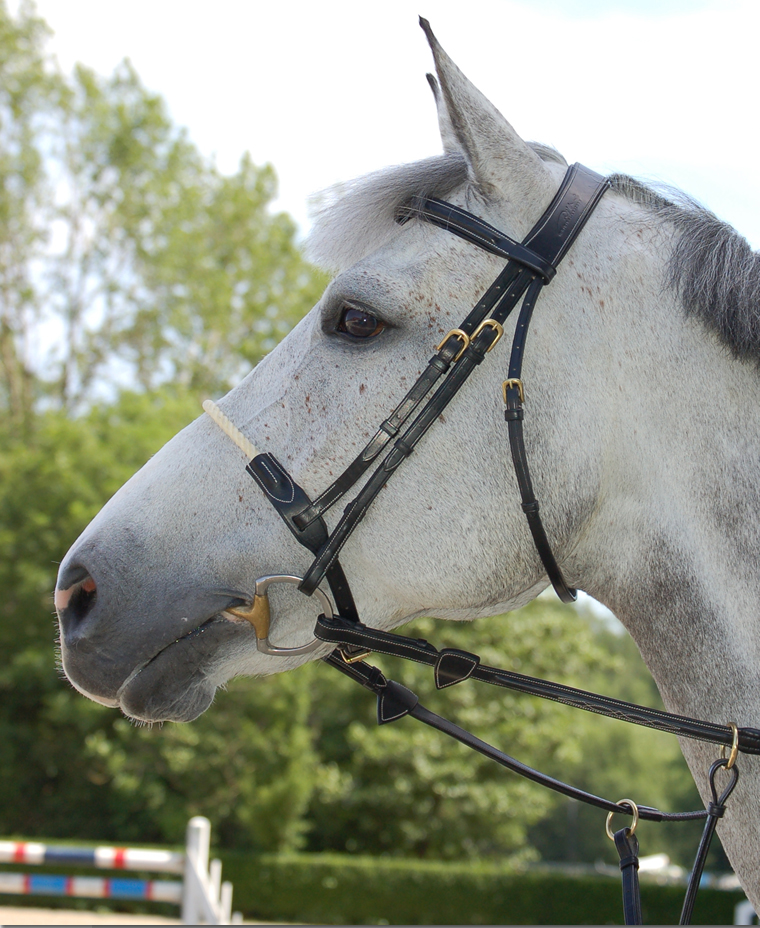
Rope noseband
In the higher ranks of showjumping, you will often encounter a noseband in form of a rope. The rope noseband is comparable to a cavesson noseband, but has a stronger and more direct influence on the bridge of the nose. This noseband is suitable for hotter horses, that tend to get strong and speedy towards a jump and need sharper aids.
However, it is not allowed to ride with only a rope noseband. The rope needs to be covered with leather, latex or something similar. This also makes it more comfortable for the horse.
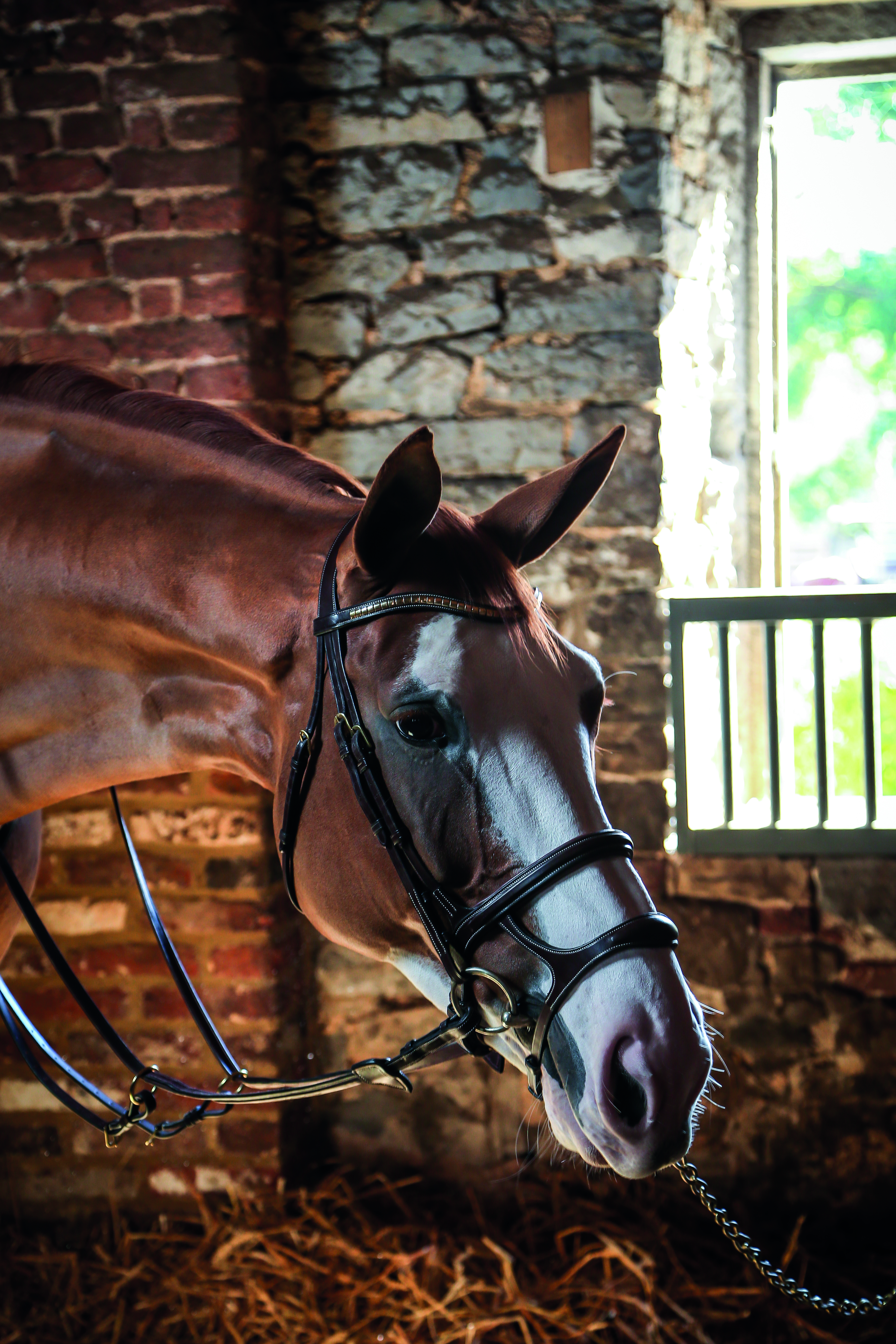
Double noseband
The double noseband from Dy’on is combination of a cavesson and drop noseband. Different pressure points of both nosebands are combined into one. This noseband is very suitable for jumping horses that like to shift and tilt their jaw.
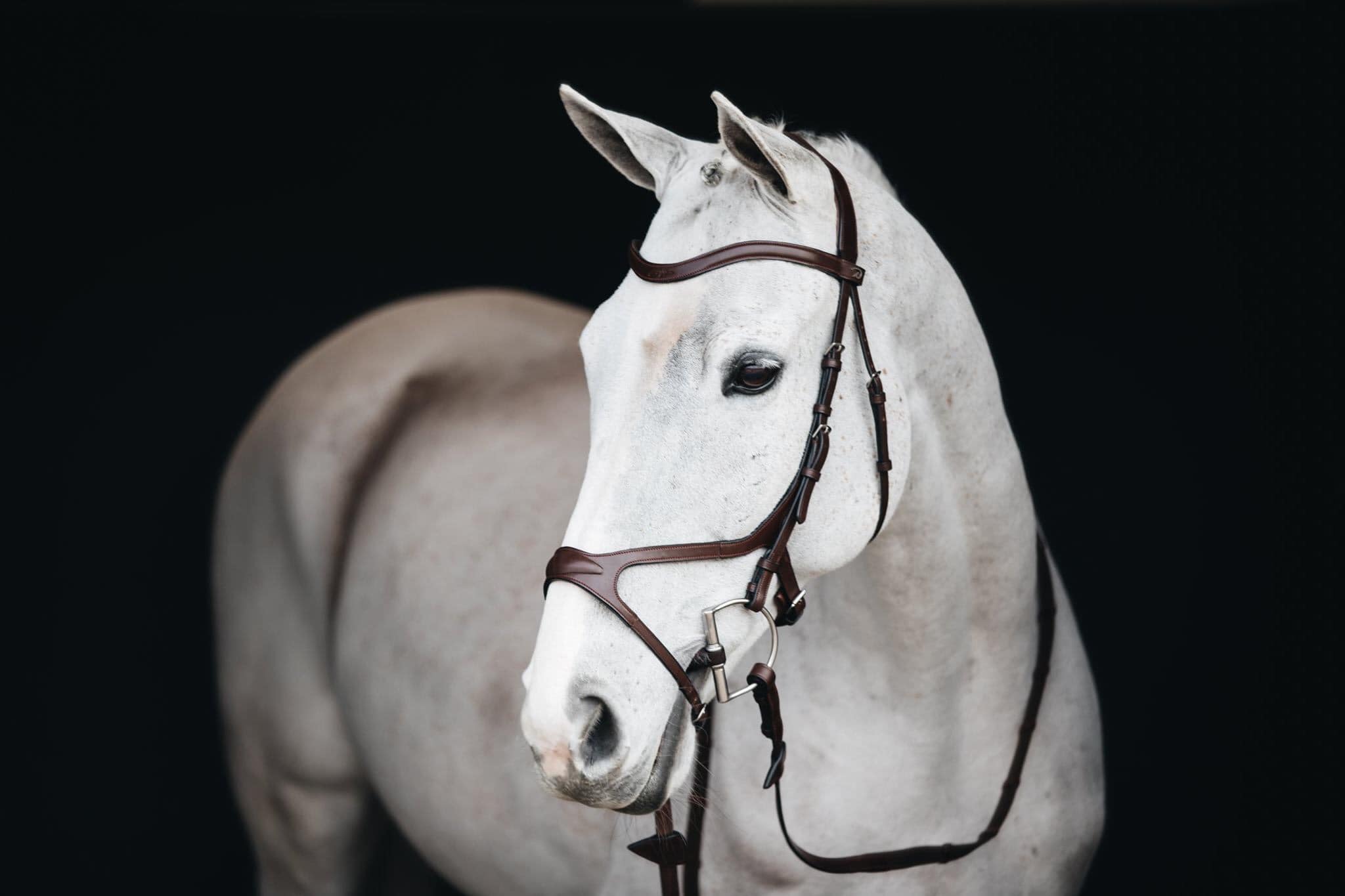
X-Fit
The X-Fit bridle is specifically designed for horse welfare and looks somewhat similar to a Mexican noseband. Thanks to its special shape, the pressure distribution of this bridle can be categorised between the cavesson and drop noseband. Thanks to the cut-away X shape, less pressure is put on the nerves and sensitive spots on the horse head. The bridle is therefore ideal for horses sensitive to pressure.
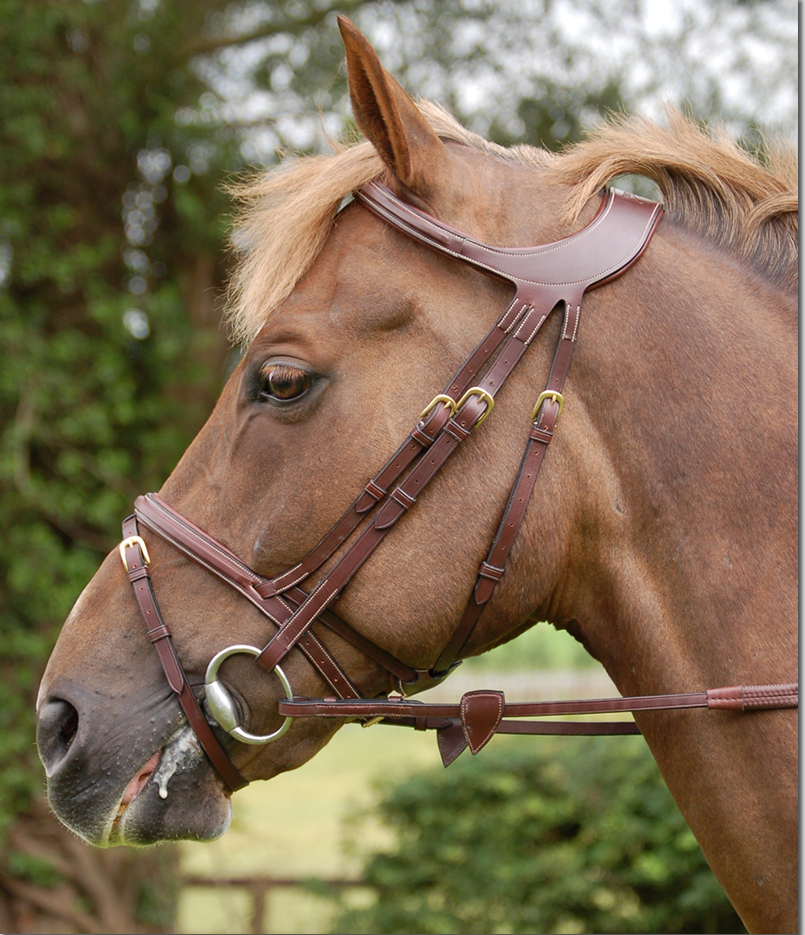
Difference Collection
The “Difference Collection” was created in collaboration of Dy’on and Equality Line, based on an idea of Lisen Bratt Fredericson ans Peder Fredericson. These bridles and double bridles were designed to rule out any pressure on the poll of the horse. The pressure that many normal bridles put behind the ears can often be uncomfortable to the horse and may also lead to communication problems between horse and rider. The area behind the ears are more sensitive than originally thought, as many nerves cross there. Thanks to the cut-back headpiece and the crosses throat latch and chin strap, the Difference Collection leaves all the sensitive areas free in order to minimise pressure.
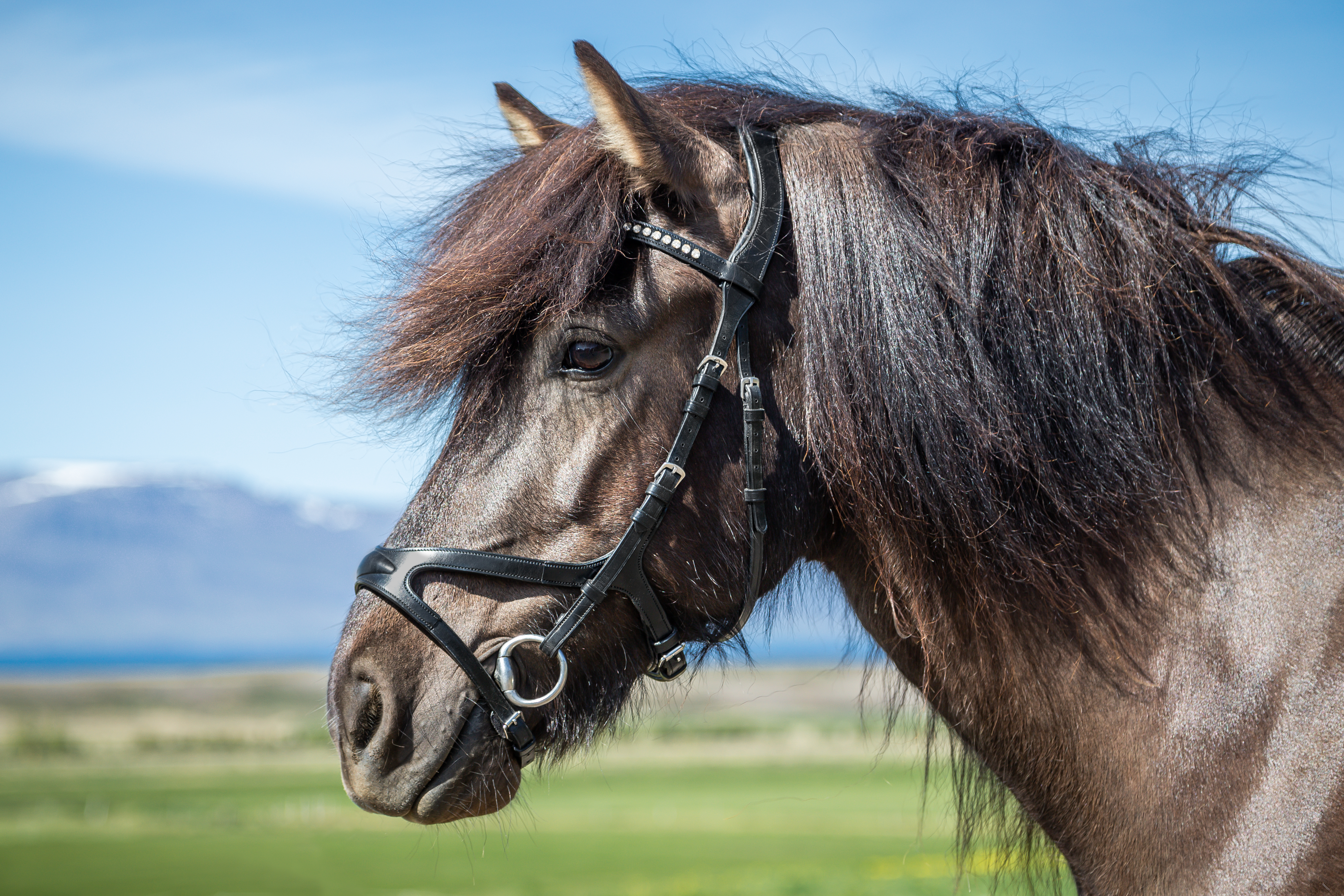
Icelandic Collection
A new collection for a special horse breed. A breed that’s rather small with a special head shape, which doesn’t compare to that of a “normal” horse. The head usually doesn’t fit any of the standard sizes of pony, cob or full.
This Icelandic Collection was designed in collaboration with Géraldine Vandevenne (Equine Bitfitter) and Mette Mannseth (renowned Icelandic breeder and teacher at the Department of Equine Studies at Holar University in Iceland).
The Icelandic Collection consists of very specific X-fit Icelandic Bridles, which are almost custom made, with an anatomic headpiece for increased comfort. The bridles come with different noseband types (flash or drop), which reduce pressure on the sensitive areas of the head. Customers also have the choice between various browbands and reins, suited for the Icelandic sport.
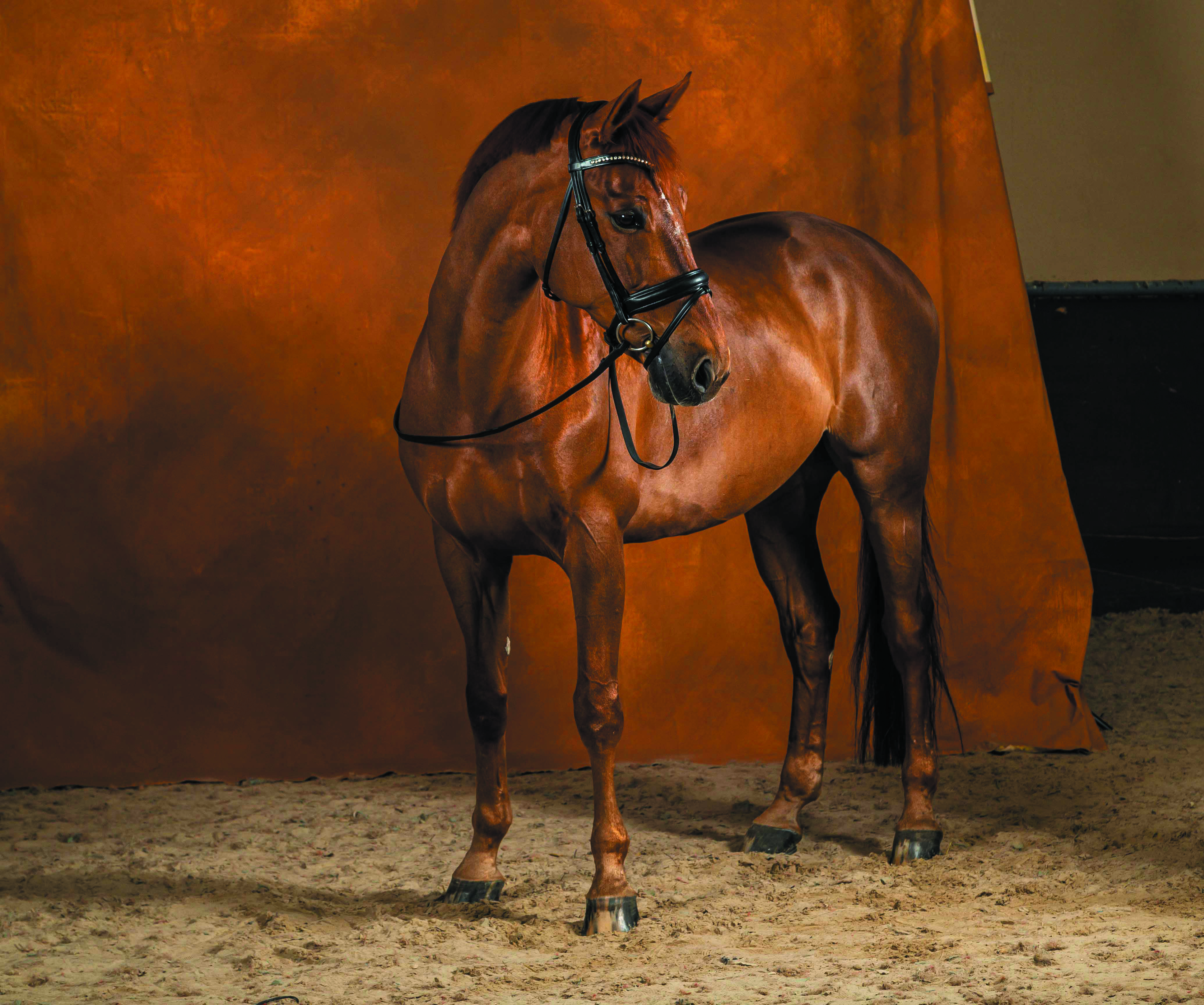
Make The Difference
When purchasing a new bridle, don’t only consider the price and look, but also the functionality and quality of the products.
Dy’on has established itself in the last years as a producer of high quality and handmade leather equipment. Dy’on bridles stand for their longevity and goodfit. National as well as international equestrians trust the expertise of Philipp Dion, who used to be a competitive rider himself. Dy’on exclusively used leather skin from Barcelone, which are treated free of chrome and whose origin and treatment can guaranteed be traced back. The development of Dy’on leather, paired with knowledge of the technical problems of the equestrian sport, contributes to the fact that all bridles, nosebands, breastplates and more meet the ergonomic and aesthetic expectations and needs of rider and horse.

The face behind the brand
The face behind Dy’on is Philippe Dion. Philippe Dion used to be an active equestrian and started out by making his own half chaps with the help of his mother’s sewing machine. After a while, more and more friends and acquaintances became interested in his leather products. Due to the positive feedback, he started making some bridles too. After the demand grew bigger, Philippe Dion decided to leave the questrian sport and his job as farrier behind, to fully focuse on the production of horse-friendly leather tack.
Philippe Dion is a fan of leather and horses. Since 30 years, he’s been connecting success with talent and contributes his experience and know-how to his brand, DY’ON ein, which let the brand become the embodiment of quality and technology.
Production – Health friendly for horse, rider and worker
Philippe Dion buys his leather in Barcelona. They are being treated chrome-free. The origin and treatment can guaranteed be traced back. Philippe Dion sends them to India, as part of the pure English leather tradition. There, the skins are being cut and pieced together by the best skilled workers. These workers, whose skills are being passed on from father to son, have excellent handwork and stitching abilities and are eager to learn. Philippe Dion founded his own organisation in Indie and ensures, that every human can work under good working conditions and is respected for the hard and good work they do. The development of Dy’on leather, combined with the knowledge of technical issues of the equestrian sport, lead to Dy’on becoming the worldwide number 1 in the bridle industry. Philippe Dion offers a wide array of products: bridles, reins, nosebands, breastplates and more. All the products meet the ergonomic and aesthetic expectations of riders and grooms around the world.
Something for everybody
Thanks to the longevity and technical aspect, the products from Dy’on are being used by equestrians all over the globe. Some well-known equestrians, such as Laura Klaphake, European champion Martin Fuchs, Grégory Wathelet and Dirk Schrade, are the amabassadors of Dy’on.
But Dy’on isn’t only something for the ambitious competitive rider. The products from Dy’on are suited for any equestrian who values high quality and the welfare of the horse.